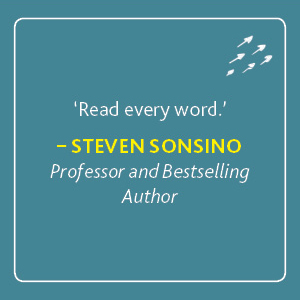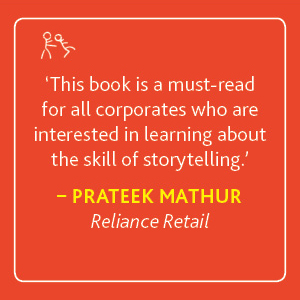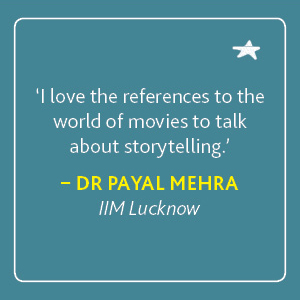
How Business Storytelling Works: An In-Depth Review
Introduction
In today’s fast-paced digital landscape, the ability to communicate effectively is paramount. Businesses are constantly seeking innovative ways to engage their audiences, stand out in the marketplace, and foster brand loyalty. One such innovative strategy that has emerged is business storytelling. This article delves into the nuances of storytelling within a business context, outlining how it works, the elements that make it effective, and the impact it can have on engagement and brand perception.
Understanding Business Storytelling
Business storytelling is the art of using narratives to communicate a brand’s message, vision, and values. It goes beyond simply recounting events; it weaves information into compelling narratives that resonate with audiences on an emotional level. By transforming data and facts into relatable stories, businesses can make complex ideas more accessible and foster a deeper connection with their audience.
The Mechanics of Storytelling
1. Structure of a Good Story
At the core of effective business storytelling lies a strong structure. Most compelling stories adhere to a three-act structure:
- Setup: Introduce characters, context, and the initial situation. This helps establish a connection with the audience.
- Conflict: Present a challenge or conflict that needs to be addressed. This is essential as it creates tension and raises stakes.
- Resolution: Provide a satisfying conclusion that resolves the conflict and highlights the lesson learned or transformation achieved.
2. Character Creation
Characters are integral to storytelling. In business, these characters can be customers, employees, or even the brand itself. Relatable characters allow audiences to see themselves in the narrative, fostering empathy and connection.
3. Emotional Resonance
Emotions drive decision-making. Effective storytelling evokes feelings such as joy, sadness, fear, or hope, compelling the audience to engage more deeply. By tapping into these emotions, businesses can make their messages more memorable and impactful.
4. Authenticity and Credibility
Authenticity is critical in storytelling. Audiences are adept at detecting insincerity. Companies that share genuine stories about their origins, struggles, and successes build trust and credibility, which is crucial for brand loyalty.
5. Visual and Sensory Elements
Incorporating visuals, metaphors, and sensory details enhances storytelling. Images, videos, and infographics can elevate the narrative, making it more engaging. Sensory descriptions can help the audience visualize the story, reinforcing their connection to it.
The Role of Storytelling in Business
1. Engaging Employees
Internal storytelling can boost employee engagement and alignment with the company’s mission. Sharing success stories, challenges the company has overcome, or customer testimonials fosters a sense of belonging and purpose among employees.
2. Building Brand Identity
Brand storytelling plays a significant role in defining a company’s identity. Every brand has a unique story, which, when conveyed effectively, differentiates it from competitors. Successful brands often have clear narratives that resonate with their target audience.
3. Enhancing Customer Connections
Customers are more likely to connect with brands that share relatable stories. By showcasing how a product or service positively impacts customers’ lives, businesses can cultivate loyalty and drive repeat purchases.
4. Effective Marketing and Communication
Storytelling can improve marketing campaigns by making messages more relatable and actionable. Instead of bombarding audiences with facts, businesses can illustrate how their products solve real-world problems, leading to higher conversion rates.
Case Studies: Successful Business Storytelling in Action
1. Nike: “Just Do It”
Nike’s iconic slogan embodies its storytelling approach. The brand isn’t just selling athletic wear; it tells inspirational stories about athletes overcoming adversity, which connects deeply with consumers who aspire to achieve their own goals.
2. Apple: The Innovator’s Narrative
Apple’s narrative centers around innovation and creativity. Through storytelling in their advertising, product launches, and customer experiences, Apple positions itself as a brand that not only provides products but also transforms lives.
3. Dove: Real Beauty Campaign
Dove’s Real Beauty campaign is a prime example of storytelling that resonates with societal issues. By sharing narratives of real women, Dove challenges conventional beauty standards, fostering a strong emotional connection with its audience.
Challenges and Pitfalls
While storytelling can be a powerful tool, it is not without its challenges. Misalignment between a story and a brand’s values can lead to disillusionment. Overly complex or unfocused narratives can confuse and alienate audiences. Businesses must ensure that their stories are clear, relatable, and consistent with their core values.
Conclusion
Business storytelling is a powerful approach that allows companies to communicate their messages in a compelling and engaging manner. By understanding the mechanics of storytelling—structure, character development, emotional resonance, authenticity, and the use of sensory elements—businesses can forge meaningful connections with their audiences. In a world inundated with information, the ability to tell a powerful story can be a game-changer, influencing consumer behavior and fostering loyalty. Organizations that embrace this art form will likely find themselves better positioned in the hearts and minds of their stakeholders. As the landscape of business communication evolves, storytelling will remain a vital tool for differentiating brands and creating lasting relationships.
Price: ₹399 - ₹266.00
(as of Feb 18, 2025 01:32:20 UTC – Details)
Why are you alive today and reading this book?
How will you, a corporate professional, be relevant in the future?
The #1 answer to both is storytelling.
Business storytelling is the #1 skill you need to succeed in your professional lives amidst all the noise, competition and massive technological disruption. In this book, Sandeep looks at human evolution, behavioural psychology and the world of movies to identify the golden principles of storytelling.
Whether you are a corporate professional, an entrepreneur, a tech guru, a marketer, a strategy consultant, a social media influencer or a student, the book tells you how to succeed in the REAL world. Sandeep brings in nuggets from his numerous storytelling workshops at leading corporates and business schools, and intersperses it with illustrations and hordes of popular culture references, making the book
as engaging as a good story. So, what are you waiting for? Head to the checkout counter.
From the Publisher


















Publisher : Penguin Business (27 March 2023)
Language : English
Paperback : 284 pages
ISBN-10 : 0143461958
ISBN-13 : 978-0143461951
Item Weight : 227 g
Dimensions : 13.97 x 1.78 x 21.59 cm
Country of Origin : India











